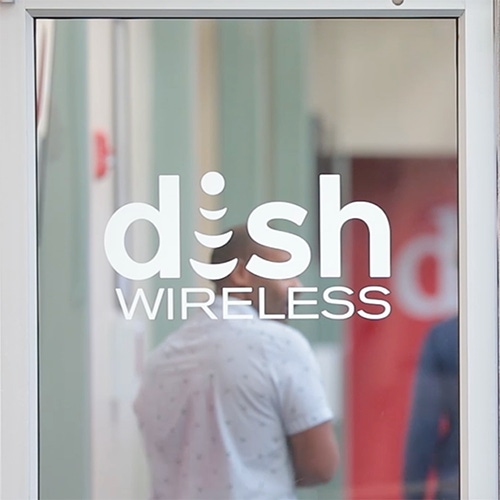AWS opens the curtain on its 5G strategy for Dish
'By utilizing the AWS Cloud, Dish was able to architect, design, build and deliver a complete cloud-native 5G network with full operations and network deployment automation,' AWS engineers wrote.

Dish Network announced roughly a year ago a massive new agreement with Amazon Web Services (AWS) that involved running its 5G network software inside the AWS cloud. At the time, there were plenty of questions over exactly how the two companies might be working together.
Indeed, some analysts wondered whether AWS had finally emerged as the long-rumored mystery partner for Dish's 5G buildout. Rumors about a potential Dish/Amazon tie-up have floated through the wireless industry since 2017. The rumors received a new lease on life during the 2019 antitrust trial between Sprint and T-Mobile when lawyers in the case hinted that Dish had some "very exciting, very exciting potential strategic partners" lined up for its planned network buildout.
(It's worth noting though that Deutsche Telekom's Timotheus Höttges testified that those rumors were "another one of [Dish Chairman] Charlie Ergen's stupid bluffs.")
Since then, the relationship between Dish and AWS has become clearer. For example, Dish officials told Light Reading last month that the company is using a VMware platform to manage the software running at the base of its cell towers, but that Dish uses the AWS cloud for most of its other network computing needs.
Now, though, the role that AWS will play in Dish's 5G network is no longer a mystery. In a 3,100-word blog post on its website, a handful of AWS executives finally took the wraps off exactly what the cloud computing company is doing with Dish. "In this blog post, we describe Dish's approach to building a scalable 5G cloud-native network in its entirety on AWS," they wrote.
It's complicated
To be clear, the details are not for the faint of heart. The AWS engineers cover everything from Breakout Edge Data Centers (BEDCs) to Generic Routing Encapsulation (GRE) tunnels to Virtual Routing and Forwarding (VRF). The company's post is filled with technical jargon and plenty of obscure networking flow charts.
Figure 1:  The Dish Wireless logo on the doors inside the company's headquarters.
The Dish Wireless logo on the doors inside the company's headquarters.
(Source: Dish)
Broadly, AWS plans to operate 16 "Local Zones" across the country, where it will host Dish's software inside its cloud computing network. Dish's Local Data Centers (LDCs) and individual cell sites will send customers' traffic into Passthrough Edge Data Centers (PEDC), which will then connect to Breakout Edge Data Centers (BEDCs) that sit in a suitable AWS Local Zone. BEDCs will run Dish's Centralized Unit (CU) and User Plane Function. "This type of edge capability also enables Dish enterprise customers and end-users (gamers, streaming media and other applications) to take full advantage of 5G speeds with minimal latency," the AWS engineers wrote. That's noteworthy considering network latency is a key metric that relies in part on the geographic proximity between users and computing resources.
At a higher, more centralized level, Dish's network also makes use of Regional Data Centers (RDCs) and National Data Centers (NDCs). Three RDCs are deployed in an AWS computing "Region," and each in a separate Availability Zone (AZ) for redundancy, in case anything goes wrong. The RDCs host Dish subscribers' signaling processes such as authentication and session management, as well as their voice calling services.
"The NDCs host a nationwide global service such as subscriber database, IMS (IP multimedia subsystem: voice call), OSS (Operating Support System) and BSS (Billing Support System)," the AWS engineers explained, adding that the AWS Direct Connect service provides connectivity between Dish's distributed units (DUs) and AWS Local Zones.
And that's just the simple stuff: "Direct Connect in combination with Local Zone provides a sub 10 msec Midhaul connectivity between Dish's on-prem RAN and BEDC. End-to-end SR-MPLS provides connectivity from cell sites to Local Zone and AWS region via Overlay Network using the vRTRs. Through this Dish has the ability to extend multiple Virtual Routing and Forwarding (VRF) from RAN to the AWS Cloud," the AWS engineers wrote. (Well, duh.)
In their lengthy post, the AWS engineers also offer some interesting insights into how Dish's networking code is developed, deployed and secured. They wrote that Dish and AWS are using "infrastructure as code" (IaC) to support network automation, and that "AWS has pioneered the development of new CI/CD tools to help a broad spectrum of industries develop and roll out software changes rapidly while maintaining systems stability and security."
The result, according to the AWS engineers, is Dish's ability to deploy new networking functions in minutes rather than days or months.
Finally, the AWS engineers also offered some details on Dish's network security. The area is of key interest to Dish, partly because large vendors like Ericsson have raised questions about the ability of open RAN network operators like Dish to deploy secure software.
"Security checks are kicked off at various stages of the pipeline to ensure the newly uploaded image is secure and complies with the desired compliance checks, and a notification can be sent to Dish," the AWS engineers wrote, outlining several different security functions and processes.
Thus, it's clear that AWS is hoping for a successful launch with Dish, considering the cloud computing giant is hoping to generate more new networking customers among both established network operators as well as with enterprises keen to build their own networks.
"By utilizing the AWS Cloud, Dish was able to architect, design, build and deliver a complete cloud-native 5G network with full operations and network deployment automation, including adoption of Open Radio Access Network (O-RAN) and other open community projects. This platform allows Dish to create innovative new services and react faster to customer demands," they wrote.
Related posts:
— Mike Dano, Editorial Director, 5G & Mobile Strategies, Light Reading | @mikeddano
About the Author(s)
You May Also Like












